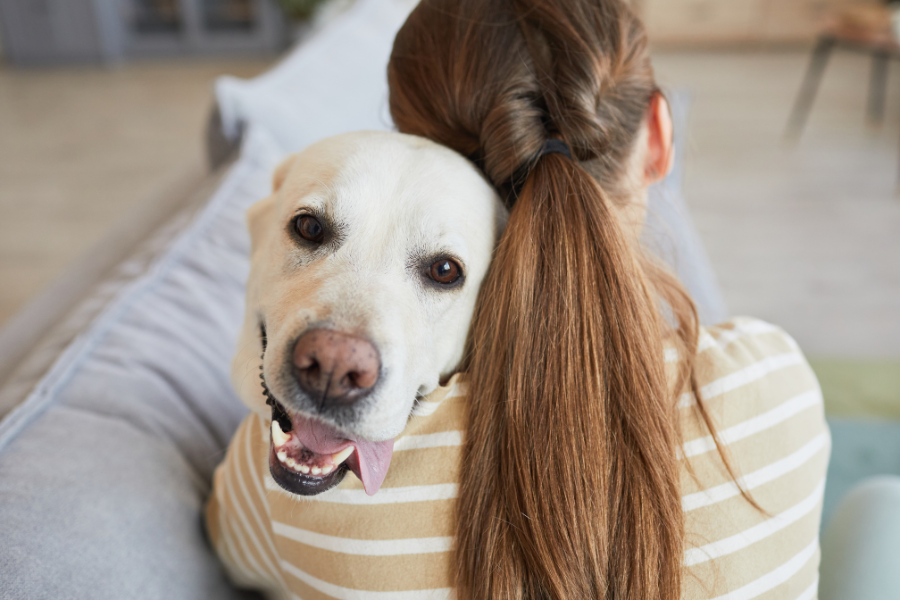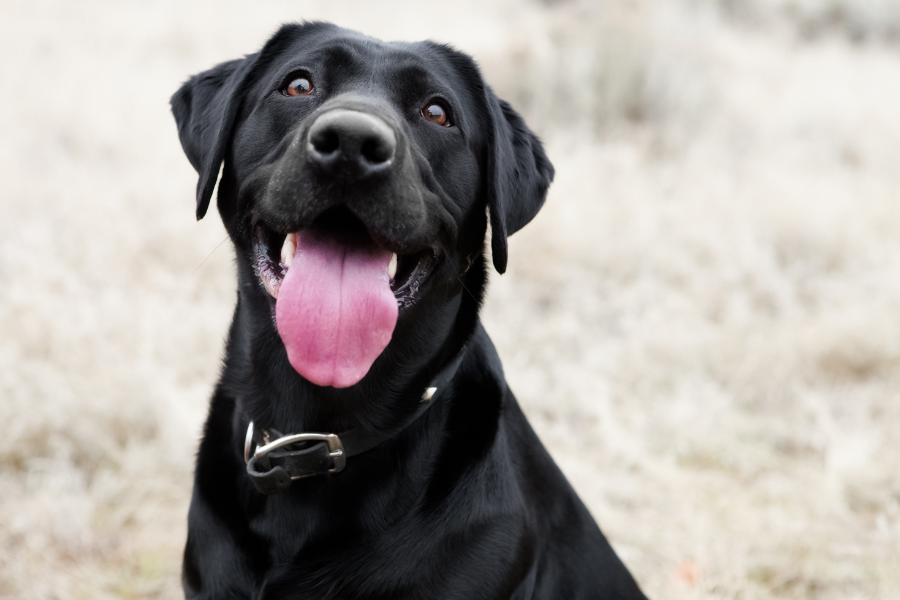You're sitting on the couch, savoring a brief moment of relaxation at the end of a long day. Your loyal best friend—the furry one with the slobbery kisses and fetching tail—is there, of course, promptly positioning themselves alongside you. Perched to their shoulder, head cocked to the side, they lean into you with a gestural weight that seems to say "Stay a while, will ya?" Why do dogs do this? Is it a flattering show of affection, a strategic ploy for pats, or something deeper that harks back to their ancestral connection to wolves? In this paw-some investigation, we'll sniff out the answers to this canine conundrum.
The History of the Lean
Leaning is so much a part of a dog's DNA that it's often overlooked as one of the many ways they communicate. But its origins are soaked in instincts and behavioral cues. In the wild, pack-dwelling wolves often lean on each other for a multitude of reasons, from establishing bonds to coordinating hunts. Domesticated dogs may not have to hunt for their next meal, but the lean still serves as a visible request for attention or affection. It's a way for them to feel close to their pack, and because you're part of their pack, that means you, couch-cuddler, are in the lean zone too.
The Pack Mentality
Before dogs were Insta-famous or couch aficionados, they lived in hierarchical packs where body language was paramount. The pack was a family unit with a clear order, and the way pack members interacted was rich with meaning, each posture and touch a subtle transmission of emotion and intent. Leaning on an alpha was a sign of respect, while leaning on a peer conveyed a sense of equality and camaraderie. For modern dogs, leaning is a nonverbal, gentle request to partake in the simple joy of physical closeness, which, incidentally, also doubles as good pack bonding.
Fido's Standpoint
From Fido's perspective, the lean is as natural and reflexive as wagging a tail. It's a way to ground himself and feel secure. After all, the world can be a big, scary place—full of vacuums and thunderstorms and mailmen who trespass territory regularly. Leaning on you provides a sense of anchoring security, akin to a lighthouse guiding a ship through stormy seas. Trust is a two-way street, and when your four-legged friend leans, they're not just looking for you to prop them up for a spell; they're also affirming the trust and comfort they find in your presence.
Breaking Down the Lean
While the lean might seem straightforward, it's a dynamic gesture with various interpretations and triggered responses. Here, we'll dissect the lean to better understand the layers of communication it conveys and what your dog might be trying to tell you.
Lean of Love
Your dog leans on you because, well, they love you. Dogs have learned to lean on humans as a method of gaining affection, treats, or simply to give and receive comfort. This isn't learned manipulation; it's an honest expression of their feelings and a strategy to maintain a close, emotionally supportive environment with their human family members. Affectionate leans are often combined with nuzzling and licking, creating a trance-inducing trifecta of love and canine saliva.
The Social Lean
In dog-to-dog interactions, a lean can signify a desire for attention or play. When navigating intricate social settings at the local pupper park, the lean is a tool your dog uses to engage with other dogs, asking for interaction without a bark or snout in their business. With you, it's no different; the social lean is a request for engagement. They're saying, "I'm here and I'm friendly. Can we have a moment, please?" And who are we to refuse such a genial overture?
The "Lean Me on This" Lean
Practical and with purpose, this lean is all about the perks. Whether it's getting a better angle for ear scratches or a more effective back rub, this is the lean with an agenda. Dogs are scrupulous observers of our behavior, so if they've noticed we humans tend to be more giving and solicitous when they're closer, don't fault them for exploiting this insight. Plus, they're right. Who wouldn't up their rub game with a little leaning involved?
The Emotional Lean
Beneath the physical act of leaning lies a rich emotional landscape. Your canine companion leans on you to satisfy a deeper longing for connection and understanding. They lean because they need to, much like we might seek out a hug at the end of a rough day. It's their way of saying, "I'm glad you're here," without uttering a word.
Reassurance and Comfort
When your dog leans, they're expressing a need for assurance. They look to you to validate their safety and well-being and to provide the comfort they seek. This is particularly evident in stressful situations like vet visits or during thunderstorms. Your acknowledgment in these moments can be the difference between a nervous whine and a resigned sigh of relief.
The Supportive Lean
As our dogs age, the supportive lean can become more frequent—it's the canine equivalent of "My hips are a little stiff today." They're asking for you to be a steady presence, supporting them in the literal and metaphorical sense. And there's something beautiful in being that dependable pillar for your furry friend; their trust in you to carry some of their weight is as touching as it gets.
The Lean of Loyalty
Undeniably one of the most endearing leans, this gesture is brimming with loyalty. It's a physical illustration of the bond you share, a bond they're wholly committed to. This lean doesn't demand anything in return; it's an offering that comes from a place of deep-rooted fidelity and an unwavering dedication to the one person who, in their world, means everything.
The Fine Balance of Leaning
An important aspect of the lean is teaching your dog the right time and place to deploy it. While leanings of love and support are welcome, excessive or forceful leaning can become problematic. Dogs need to learn not to rely too heavily on their favorite humans—literally. Excessive leaning can be hard on your back and joints, not to mention your decorum, if you're out trying to have a nice walk and they're treating your leg like a lamp post.
Training the Lean
Integrating lean management into training is a process best served with love and patience. Positive reinforcement, like treats and praise, is an effective way to teach your pup when leaning is appropriate and when it's not. Consistency is key; the rules don't change when Aunt Sally visits, no matter how much your dog adores her. With time, they'll learn that leaning requires an unspoken invitation, one they can earn with good behavior and a grateful heart.
A Balancing Act
Finding the balance in leaning is about setting clear boundaries while still responding to your dog's needs. This doesn't mean to shut down the lean entirely—far from it. It's about refining and managing the frequency and intensity. Encouraging a dependent lean might hinder your pet's social development and self-assurance, two crucial components of a well-adjusted, happy dog. The goal is for leaning to retain its endearing qualities without becoming an overreliance.
Beyond the Lean: Boundless Canine Gestures
While the lean is a charmingly unique way dogs show their affection and seek closeness, it's just one stroke on the expansive canvas of canine communication. Tails wag, ears perk up, faces scrunch into grins (yes, dogs do smile—proven fact!), and bodies press against yours, each gesture a masterpiece of emotions and desires. Understanding these gestures not only enriches the bond you share with your dog but can also lead to a partnership that is, quite literally, unspoken poetry in motion.
Connecting with Your Companion
In the intricate dance of human-dog companionship, the more attuned you become to your pet's forms of expression, the deeper your connection will grow. Spend time observing and participating in their nonverbal dialogue. Whether it's through play, training, or simply coexisting in cozy proximity, you're creating a shared language that transcends the limits of words.
Reciprocity and Trust
Trust is the linchpin of the human-animal bond. When your dog leans, they're engaging in an act of trust, expecting you to reciprocate in kind. Your consistent acknowledgment and response to their lean is a testament to that trust. It's a beautiful circle of give and take that underpins the foundation of your relationship.
The Joy of Understanding
The delight of deciphering your dog's communication goes both ways. Not only do you get to experience the innocent joy and love they readily express, but you also witness the unfiltered, unmasked nature of their being. And in those moments of shared understanding, you realize that no matter the language, love needs no translation.
In Conclusion: A Lean's Heartfelt Reverb
The next time your dog lets out a deep sigh and leans into you, your heart swells with affection, and you wonder at the simplicity and poetry of the gesture, remember that this lean isn't just about physical proximity. It's an intermingling of trust, affection, and needs communicated with sublime elegance through actions. Lean back, by all means. The love they lean is fervent; the bond they're leaning into is unbreakable. Welcome it, cherish it, and may your relationship with your four-legged friend always be defined by such beautiful connections.
Now go, humans and hounds alike. Lean in, in all the ways that move you. And know that in the leanings of life, you've found a love that never wavers—a love that leans right back.
Resources:
Cimarelli, G., Marshall-Pescini, S., Range, F. Berghänel, A., Berghänel, Z. (2021). Relationship quality affects social stress buffering in dogs and wolves. Animal Behaviour, 178, 127-140. https://www.sciencedirect.com/science/article/pii/S0003347221001755



